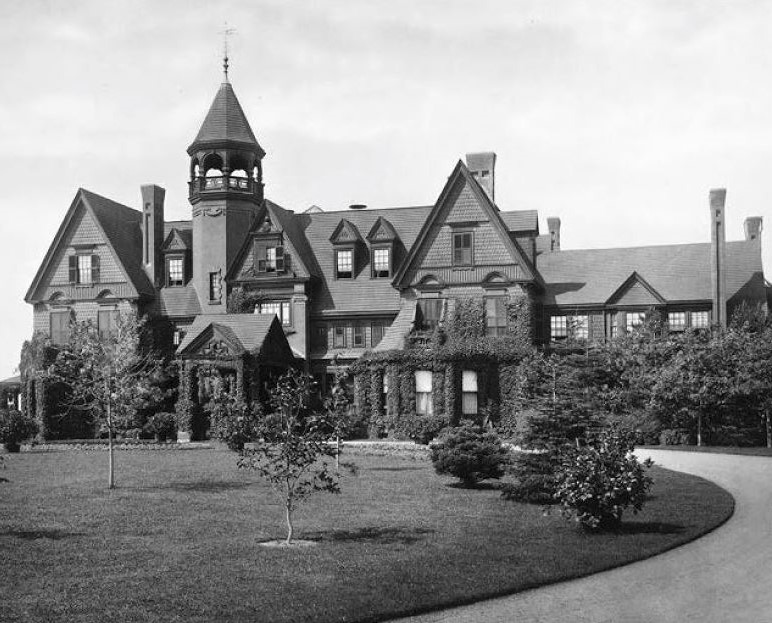Newport is fortunate to have had many of the most notable American architects of the nineteenth and early twentieth centuries design buildings within the community. Peter Harrison, Richard Upjohn, Richard Morris Hunt, H.H. Richardson, Horace Trumbauer, and Stanford White are just a few of the architects who were prominent on a national level to have designed buildings in the “City by the Sea.” But there is also a tremendous richness of work by those who were more noted on a regional level. One such architecture firm was Peabody & Stearns, which is the topic that has been selected for this year’s Newport Architectural Symposium to be hosted and organized by the Tennis Hall of Fame for Saturday, May 7. Last year’s symposium on McKim, Mead, and White sold out well in advance so, if you are interested in participating, please acquire your reservations soon.
Peabody and Stearns was a Boston company that designed more than a dozen structures in Newport between 1871 and 1902, many of which still exist. Some of the structures, like the Althorpe and Vinland mansions, have become part of Salve Regina University. Other buildings, like the Hillside, Honeysuckle Lodge, and Ridgemere mansions that are part of the afternoon tour that the Symposium participants will take, are still cared for by private individual owners. Still others, like the original Breakers mansion and Easton’s Beach Pavilion, have been lost to fire, flood and time. In earlier years their work was done in a Victorian Shingle style that was characterized by asymmetric arrangements of gables, towers, and porches — all clad in ornately cut cedar shingles — which gave the buildings an almost gothic appearance. Over time, and in concert with what was happening with American architectural design, their design evolved toward the highly symmetric and formal brick structures like Ridgemere and Hopedene that are more “Italianate” in character.
The morning of this year’s Newport Architectural Symposium on Peabody & Stearns will benefit from lecture’s by three of the more prominent scholars on the subject: Kevin Murphy, Abigail Van Slyck, and Annie Robinson (whose recently completed book Peabody & Stearns: Country Houses and Seaside Cottages, is currently the magnum opus on the subject). The attendees will then have lunch at the magnificent Casino Horseshoe Piazza. In the afternoon, the group will then have the opportunity to tour three of the private mansions that are otherwise closed to public examination and study. For those that love architecture, especially from the Gilded Age, it is a unique opportunity to learn about and then see directly, the work of one of the firms that helped give form and shape to more than 1000 building designs from Maine to New York.
Newport is a treasure trove of architectural masterpieces from the Wanton-Lyman Hazard House, built in the 1690s, even to the present day. The city excels in the area of colonial architecture (much of which is long since lost in cities like Boston, New York, and Philadelphia) and the great mansions of the “Gilded Age” (which were only built in a very few places during the late 19th and early 20th centuries). As a repository of these works it is admirable for Newport and institutions like the Tennis Hall of Fame to help make these resources available to scholars and interested individuals from around the country at the annual Symposium, but it is also a great benefit for the city to shine a spotlight on these extraordinary works to gather attention and financial support from around the country to help us preserve this architectural heritage that is so rare and irreplaceable!
Looking to renovate your space or create a new one? Let’s connect.
Join the Architectural Forum to stay up-to-date with architectural news from Rhode Island and abroad.
Ross Sinclair Cann, AIA, LEED AP, is a historian, educator, and practicing architect living and working in Newport. His firm, A4 Architecture, is one of the sponsors of the Symposium. This article was initially published in ARCHI-TEXT, in Newport This Week, April 14, 2011.
